Würzburg
| Würzburg | |
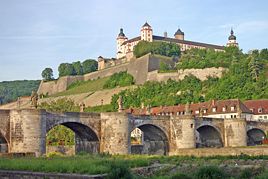 |
|
| Coat of arms | Location |
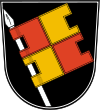 |
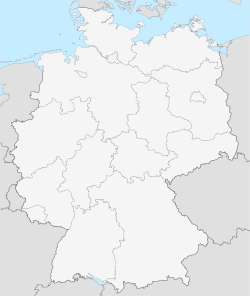 |
| Administration | |
| Country | Germany |
|---|---|
| State | Bavaria |
| Admin. region | Lower Franconia |
| District | Urban district |
| Mayor | Georg Rosenthal (SPD) |
| Basic statistics | |
| Area | 87.63 km² (33.8 sq mi) |
| Elevation | 177 m (581 ft) |
| Population | 135,212 (30/12/2007) |
| - Density | 1,543 /km² (3,996 /sq mi) |
| Other information | |
| Time zone | CET/CEST (UTC+1/+2) |
| Licence plate | WÜ |
| Postal codes | 97018–97084 |
| Area code | 0931 |
Würzburg (pronounced [ˈvʏɐ̯ʦbʊɐ̯k]) is a city in the region of Franconia which lies in the northern tip of Bavaria, Germany. Located on the Main River, it is the capital of the Regierungsbezirk Unterfranken. The regional dialect is Franconian.
Würzburg is approximately 120 kilometres (75 mi) from either Frankfurt or Nuremburg by road. Distances to the nearest cities by motorway: Frankfurt 115 km, Nuremberg 90 km, Stuttgart 150 km, Kassel 215 km.
The city of Würzburg is not included in the district of Würzburg, but is its administrative seat. Its population is 131,320 as of December 31, 2006.
Contents |
History
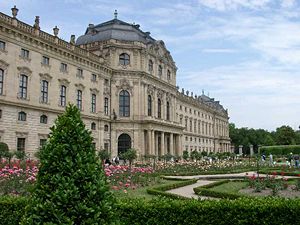
By 1000 BC a Celtic fortification stood on the site of the present Fortress Marienberg. It was Christianized in 686 by Irish missionaries Kilian, Colman and Totnan. The city is first mentioned as Vurteburch in 704. The first diocese was founded by Saint Bonifatius in 742. He appointed the first bishop of Würzburg, Saint Burkhard. The bishops eventually created a duchy with its center in the city, which extended in the 12th century to Eastern Franconia. The city was the seat of several Imperial diets, including the one of 1180, in which Henry the Lion was banned from the Empire and his duchy was handed over to Otto of Wittelsbach.
The first church on the site of the present Würzburg Cathedral was built as early as 788, and consecrated that same year by Charlemagne; the current building was constructed from 1040 to 1225 in Romanesque style. The University of Würzburg was founded in 1402 and re-founded in 1582.

The citizens of the city revolted several times against the bishop-prince, until definitively defeated in 1400. Later, Würzburg was a center of the German Peasants' War; the castle was besieged unsuccessfully. Notable prince-bishops include Julius Echter von Mespelbrunn (1573–1617) and members of the Schönborn family, who commissioned a great number of the monuments of today's city. In 1631, Swedish King Gustavus Adolphus invaded the town and destroyed the castle.
In 1720, the foundations of the Würzburg Residence were laid. The city passed to the Electorate of Bavaria in 1803, but two years later, in the course of the Napoleonic Wars, it became the seat of the Electorate of Würzburg, the later Grand Duchy of Würzburg. In 1814, the town became part of the Kingdom of Bavaria and a new bishopric was created seven years later, as the former one had been secularized in 1803.
Massacres of Jews took place in 1147 and 1298 and expulsions throughout the Middle Ages. In the period of Nazi rule, almost the whole Jewish and Gypsy population of the city was wiped out.
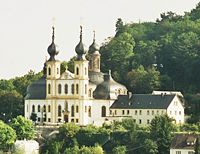
During World War II, on March 16, 1945, about 90% of the city was destroyed by some 225 Lancaster bombers in 17 minutes by a British air raid. Most of the city's churches, cathedrals, and other monuments did not survive, while the city center, dating from medieval times, was totally destroyed in a firestorm in which some 5,000 people perished. During the next 20 years, the buildings of historical importance were painstakingly and accurately replicated. The citizens who rebuilt the city immediately after the end of the war were mostly women (Trümmerfrauen = Rubblewomen). Men were either dead or POW. Relatively, Würzburg was destroyed more completely than was Dresden in a firebombing the previous month.
Since the end of the war, Würzburg has been host to the US Army's 3rd Infantry Division, 1st Infantry Division, US Army Hospital and various other US military units who have maintained a presence in Germany. The local Würzburg economy benefited greatly from the US military presence. However, these units are due to withdraw from Würzburg by 2008 which brings an end to over 60 years of US military occupation in Würzburg.
Town structure
Würzburg is divided into 13 municipals which are additionally structured 25 boroughs. In the following overview, the boroughs and their numbers are allocated to the 13 municipals.
|
01 Altstadt
|
02 Zellerau
03 Dürrbachtal
04 Grombühl
05 Lindleinsmühle
|
06 Frauenland
07 Sanderau
08 Heidingsfeld
09 Heuchelhof
|
10 Steinbachtal
11 Versbach
12 Lengfeld
13 Rottenbauer
|
Commerce and business
Würzburg is mainly known as an administrative center. Its largest employers are the Julius-Maximilians-University which is one of the oldest universities in Germany, first founded in 1402 and the municipality. The largest private employer is world market leader Koenig & Bauer, a maker of printing machines. Würzburg is also the capital of the German wine region Franconia which is famous for its mineralic dry white wines especially from the Silvaner grape.
Transport
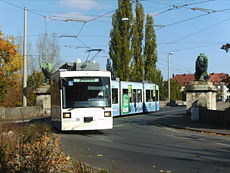
- Roads
The city is located on the intersection of the Autobahns A 3 and A 7.
- Rail
The city's main station is at the southern end of the Hanover-Würzburg high-speed rail line and offers frequent InterCityExpress and InterCity connections to cities such as Frankfurt, Nuremberg, Munich, Kassel, Hanover or Hamburg. It also is an important hub in the regional rail network.
- Trams
Würzburg has a tram network of 5 lines with a length of 19.7 km. There are plans for extension in the next years.
- Buses
27 bus lines are connecting several parts of the city. 25 bus lines connect the Würzburg district with the city.
- Port
The Main river flows into the Rhine and is connected to the Danube via the Rhine-Main-Danube Canal. This makes it part of a trans-European waterway connecting the North Sea to the Black Sea.
Arts and architecture
Notable artists that lived in Würzburg include poet Walther von der Vogelweide (12th and 13th cent.), philosopher Albertus Magnus and painter Mathias Grünewald. Two artists who made a lasting impression were sculptor Tilman Riemenschneider (1460–1531), who was also mayor and participated in the Peasants' War, and Balthasar Neumann (1687–1753), Baroque architect and builder of the Würzburg Residence, now a UNESCO World Heritage Site. Its interior was decorated by Giovanni Battista Tiepolo and his son, Domenico.
Many of the city's "100 churches" survived intact with styles ranging from Romanesque (Würzburg Cathedral), Gothic (Marienkapelle), Renaissance (Neubaukirche), Baroque (Stift Haug Kirche) to modern (St Andreas).
Würzburg hosts the Mainfranken Museum, with artifacts from prehistory until modern times, a Museum of the cathedral, galleries for ancient and modern art, and the "Kulturspeicher" from 2002. Notable festivals include the Afrika Festival in May, the Mozartfest, in June/July and the Kiliani Volksfest in mid July.

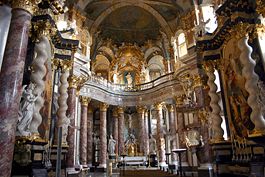
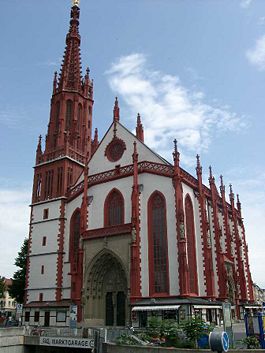

Main sights
- Würzburg Residenz: The vast complex on the eastern edge of the town was commissioned by two prince-bishops, the brothers Johann Philipp Franz and Friedrich Karl von Schönborn. Its construction between 1720 and 1744 was supervised by several architects, including Johann Lukas von Hildebrandt and Maximilian von Welsch. Although much of it destroyed during WWII, it has beem completely rebuilt as it was before the war. However, it is associated mainly with the name of Balthasar Neumann, the creator of its famous Baroque staircase. Its main sights are:
- Hofkirche: The church interior is richly decorated with paintings, sculptures and stucco ornaments. The altars were painted by Giovanni Battista Tiepolo.
- Treppenhaus: The largest fresco in the world adorns the vault of the staircase by Giovanni Battista Tiepolo. For many years the staircase appeared on a Deutschmark bill.
- Kaisersaal: The centerpiece of the palace, emperor's chamber which testifies the close relationship between Würzburg and the Holy Roman Empire.
- The Fortress Marienberg is the castle on a hill across the Old Main Bridge, overlooking the whole town area as well as the surrounding hills.
- Würzburg's Old Main Bridge (Alte Mainbrücke) was built 1473–1543 to replace the destroyed Romanesque bridge from 1133. It was adorned from 1730 on in two phases with well-known statues of saints and famous persons. A similar impressive bridge is the Charles Bridge in Prague.
- Among Würzburg's many notable churches are the Käppele, a small Baroque/Rococo chapel by Balthasar Neumann on a hill opposite to the fortress and the Dom (Würzburg Cathedral). The Baroque Schönborn Chapel, a side-chapel of the cathedral has interior decoration made of (artificial) human bones and skulls. Also in the cathedral are two of Tilman Riemenschneider's most famous works, the tomb stones of Rudolf II von Scherenberg (1466–1495) and Lorenz von Bibra (1495–1519). Look for replicas of the statues of Adam and Eve by Riemenschneider at the entrance to the Marienkapelle (on the market square). The Neumünster is a Romanesque minster church with a Baroque façade and dome. Among the Baroque churches in the inner city are Stift Haug, St. Michael, St. Stephan and St. Peter.
- The Julius Spital is a Baroque hospital with a courtyard and a church built by the prince bishop Julius Echter. Its medieval wine cellar, together with those of the Würzburg Residence and the Bürgerspital are one place to taste the Frankenwein. With an area under cultivation of 1.68 square kilometres, the Julius Spital is the second largest winery in Germany.
- The Haus zum Falken next to the Marienkapelle, with its splendid facade, is an achievement of the Würzburg rococo period and accommodates a tourist office.
- The Stift Haug was built in the years 1670–1691 and was the first Baroque church in Franconia. It is the most important building of the Italian architect Antonio Petrini.
University of Würzburg
- Wilhelm Röntgen's original laboratory, where he discovered X-rays in 1895, is at the University of Würzburg.
- The University awarded Alexander Graham Bell an honorary Ph.D for his pioneering scientific work.
Notable people
- Philipp Franz von Siebold was among the first Westerners to visit and work in Japan
- Werner Heisenberg
- Wilhelm Conrad Röntgen, who discovered X-rays on 28 December 1895.
- Leonhard Frank, an expressionist writer.
- Waltraud Meier, world-class opera singer.
- The American artist Mark Bloch was born on the U.S. Military base in Würzburg in 1956.
- Frank Baumann
- Dirk Nowitzki
- Björn Emmerling
- Oskar Dirlewanger, war criminal and S.S. leader of the SS-Sturmbrigade Dirlewanger.
Historic population figures for Würzburg
| Year | Population |
|---|---|
| 1200 | 5,000 |
| 1787 | 18,070 |
| 1900 | 84,335 |
| 1939 | 112,997 |
| 1950 | 86,564 |
| 1961 | 126,093 |
| 1970 | 128,547 |
| 1987 | 123,378 |
| 2002 | 131,582 |
| 2004 | 133,539 |
| 2006 | 134,913 |
Twin towns
Würzburg maintains cultural, economic + educational ties with:
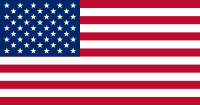 Faribault, U.S., since 1949
Faribault, U.S., since 1949 Dundee, UK, since 1962
Dundee, UK, since 1962 Caen, France, since 1962
Caen, France, since 1962 Rochester, U.S., since 1966
Rochester, U.S., since 1966 Mwanza, Tanzania, since 1966
Mwanza, Tanzania, since 1966 Otsu, Japan, since 1979
Otsu, Japan, since 1979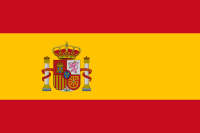 Salamanca, Spain, since 1980
Salamanca, Spain, since 1980 Suhl, Germany, since 1988
Suhl, Germany, since 1988 Umeå, Sweden, since 1992
Umeå, Sweden, since 1992 Bray, Ireland, since 2000
Bray, Ireland, since 2000
Associated:
 With the Germans of the district Trautenau, Czech Republic since 1956
With the Germans of the district Trautenau, Czech Republic since 1956
Partner:
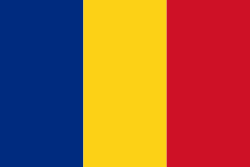 With the City of Arad in Western Romania
With the City of Arad in Western Romania
See also
- Bishopric of Würzburg
- Rintfleisch-Pogrom
Literature
- Congress - Tourismus - Wirtschaft (A municipal enterprise of the City of Würzburg): Würzburg. Visitors' Guide. Würzburg 2007. A leaflet.
External links
- City of Würzburg
- Information and pictures of Würzburg & Residence (English)
- Würzburg City Panoramas - Panoramic Views and Virtual Tours
- Streifzug durch Würzburg (Media)
- University of Würzburg
- Würzburg University of Music
- Fachhochschule Würzburg-Schweinfurt
- Pictures of Würzburg (German/English)
- Pictures and information about Würzburg (German)
- War memorial in Wuerzburg at the Sites of Memory webpage
- VVM Public Transport company in Würzburg
- Würzburg Public Library
|
||||||||